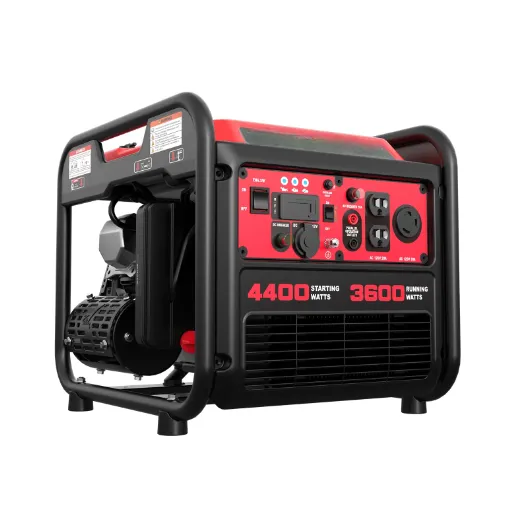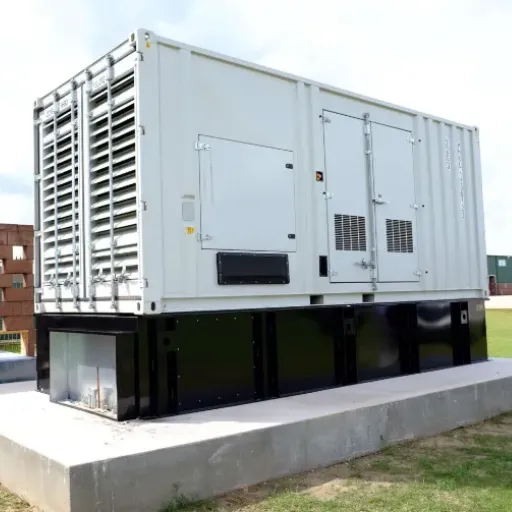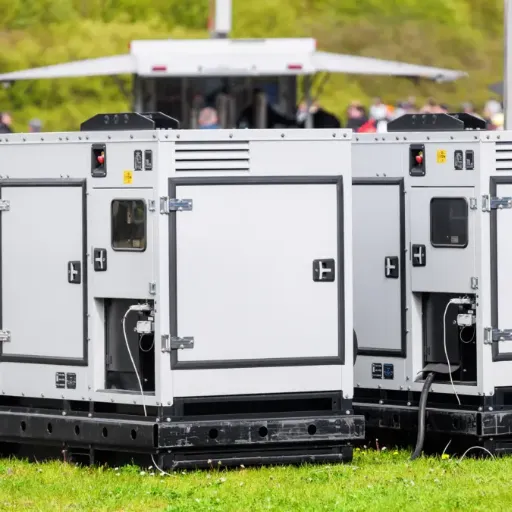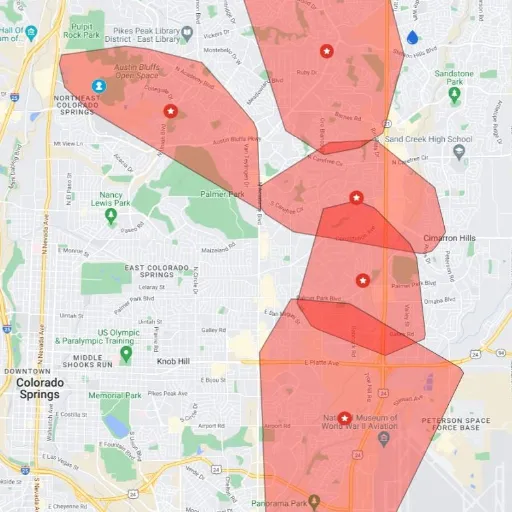When an unexpected power cut hits your street, having an electrical generator could be a blessing, supplying crucial energy to keep the essential appliances running and maintain a comfortable home environment. However, it is not relatively so easy. Numerous safety precautions, maintenance tips, and operational procedures are worth considering when it comes to generators. Whether it is your first time considering a generator for your use or you have been utilizing one all along and intend to make the most of your computer equipment now, this guide has the answer for you. Read through to know the essential tips on using a generator during a power outage so you will be prepared, safe, and powered whenever it counts.
How Does a Generator Work During an Outage?
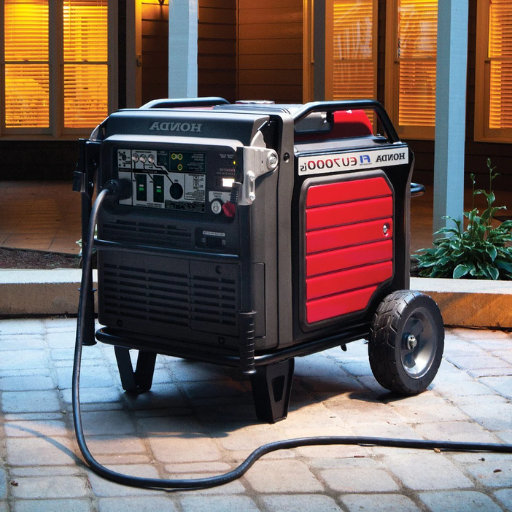
A generator supplies power during a power failure by converting mechanical energy into electrical energy. Portable generators usually run on fuel, such as gasoline, propane, or diesel. As soon as you switch it on, the engine rotates the alternator, and the alternator generates electricity. Then, power is fed from the generator to your appliances or electronics. For safety purposes, a generator must be set up outdoors away from windows and doors to avoid carbon monoxide buildup. You can plug devices directly into the generator or go through a transfer switch to power circuits in your home.
What Happens When Power Goes Out?
When power fails, an interruption occurs along the grid supplying electricity to your home or area. There might be several causes: bad weather, such as thunderstorms, hurricanes, or snowstorms; equipment failures; scheduled maintenance; or grid overload during demand spikes. According to recent statistics, the average American household faces power outages roughly once or twice a year, lasting about four hours. However, extreme weather conditions could produce outages lasting for days or weeks, sometimes even months in rare cases.
During a power outage, things like lighting, heating, or cooling will stop working in your home unless you have a backup power source like a generator. After a few hours, food will spoil in your fridge or freezer. According to the CDC, perishable food will stay safe for approximately 4 hours in the refrigerator or 48 hours in a fully stocked freezer if the door remains shut. Outages could also disrupt communication networks, depending on your setup, so sometimes there will be no TV, internet service, or telephone. Outages vary in duration and frequency from neighborhood to neighborhood. For instance, California faced extended outages in recent years under wildfire-mitigation efforts, while in Texas, 2021 winter storms created widespread blackouts. Recognizing these threats and preparing accordingly—buying a generator, stocking up on non-perishable food, and assembling an emergency kit—is the recipe for your safety during a knockout.
How Does a Generator Provide Backup Power?
A generator is the backup power, with a fuel source of mechanical energy converted to electrical energy, thereby letting essential appliances and systems continue to function during a power cuts. Here are five conditions of how generators work and perform their functions:
- Fuel Source
Generators typically take in gasoline, propane, natural gas, and diesel. The fuel selected powers the engine of the genset, starting the energy conversion process.
- Engine Operation
The engine converts the burning of fuel into mechanical energy. The mechanical energy then drives a rotating member, usually a rotor, inside the generator.
- Alternator Functioning
The alternator inside the generator converts the engine’s mechanical energy into electrical energy by electromagnetic induction to produce a voltage that can operate devices.
- Switch (ATS)
Most standby generators have an Automatic Transfer Switch that senses a power outage and starts the generator to supply electricity before the power flow becomes interrupted.
- Regulation and Output
The generator is assisted by a voltage regulator, which controls the output to ensure a steady supply of electricity, thus avoiding voltage spikes that may damage sensitive electrical equipment connected to the generator.
Together, these components ensure the provision of on-demand electricity whenever required during an outage, making generators a must-have for houses and businesses.
Types of Generators for Outage Situations
|
Generator Type |
Power Output |
Fuel Type |
Noise Level |
Portability |
Cost Range |
|---|---|---|---|---|---|
|
Portable |
3,000-8,500 watts |
Gasoline, Propane |
Moderate (60-80 dB) |
High, with wheels |
$450-$2,000 |
|
Inverter |
1,500-7,600 watts |
Gasoline |
Quiet (50-60 dB) |
Compact, lightweight |
$500-$4,000 |
|
Standby (Whole-House) |
7,000-22,000+ watts |
Natural Gas, Propane |
Moderate (60-70 dB) |
Fixed installation |
$3,000-$10,000+ |
|
Solar |
Varies, storage-based |
Solar Energy |
Silent (0 dB) |
Fixed or portable |
$15,000-$60,000+ |
|
Dual-Fuel Portable |
5,500-13,000 watts |
Gasoline, Propane |
Moderate (70-80 dB) |
High, with wheels |
$1,000-$2,500 |
Generator Safety Measures to Follow
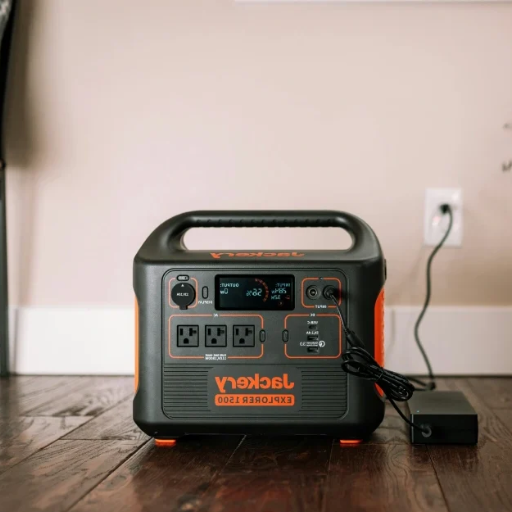
- Use in Well-Ventilated Areas
Generators must always be run outside and away from windows, doors, and vents to prevent carbon monoxide poisoning.
- Follow Manufacturer Guidelines
Read and follow all instructions provided by the manufacturer for use and maintenance of the generator.
- Keep Dry and Protected
Do not run the generator under wet or damp conditions to avoid an electric shock hazard. If necessary, use a special cover for the generator.
- Store Fuel Properly
Always keep fuel in approved containers in a cool and well-ventilated place. Never fill a generator when it is in motion or hot.
- Avoid Overloading
Do not hook up more appliances than the generator’s rating. Based on its wattage rating, an overload will cause damage or may cause a hazard.
- Use the Proper Transfer Switch
Use a professionally installed transfer switch to distribute power from the generator to your house safely.
Why is Carbon Monoxide a Concern?
Carbon monoxide, or CO, is a deadly gas inhaled in large quantities. It sustains its presence when compounds such as gasoline, propane, or natural gas are released without complete combustion. Left unchecked, generators pose a significant source of carbon monoxide exposure. Let’s look at the five essential reasons carbon monoxide is seriously concerning:
- Health Concerns
Carbon monoxide binds to hemoglobin in the blood much more readily than oxygen and diminishes its transport in blood plasma to deliver oxygen to vital organs. Some symptoms of carbon monoxide poisoning are dizziness, headaches, nausea, and confusion; prolonged exposure could lead to death.
- Unseen, Unsmelled Danger
Carbon monoxide, being colorless and odorless, floats unnoticed, gathering in enclosed, poorly ventilated spaces. Death by carbon monoxide is called “the silent killer.”
- Quickly Reaches Unsafe Levels
Even operating a small, portable generator in an enclosed or semi-enclosed environment can cause lethal CO levels in just 5 minutes.
- CO Poisoning Data
According to the CDC, 50,000 people are reported in emergency rooms every year in accidental cases of carbon monoxide poisoning; of these, 400 deaths are reported annually.
- Improper Use of Generators
Many cases of carbon monoxide poisoning involve generators operating in garages, basements, or any enclosed place without proper ventilation. Avoid these practices to eliminate the chances of exposure.
Understanding these factors clearly illustrates why one needs to observe all the precaution measures relating to generator use and other appliances that emit carbon monoxide. To cut risks, always remember to consider ventilation and backup with carbon monoxide detectors.
How to Keep the Generator at a Safe Distance from Home?
|
Parameter |
Details |
|---|---|
|
Minimum Distance |
At least 20 feet from home |
|
Placement Surface |
Stable, fire-resistant, noncombustible |
|
Ventilation |
Ensure an open, well-ventilated area |
|
Away From Openings |
Keep the exhaust directed away from windows/doors |
|
Never Indoors |
Avoid garages, basements, porches, and sheds |
|
Weather Protection |
Use a generator-specific tent or cover |
|
Carbon Monoxide Monitors |
Install alarms near sleeping areas |
|
Avoid Combustibles |
Clear the area of leaves and debris |
|
Refueling Distance |
Store fuel at least 10 feet away |
|
Electrical Safety |
Use outdoor-rated cords and devices |
Importance of Extension Cords and Transfer Switch
This way, using heavy-duty extension cords and a properly installed transfer switch will guarantee the safe transfer of power, avoid creating electrical hazards, and shield the appliances from damage that could occur during generator use.
Choosing the Right Generator for a House
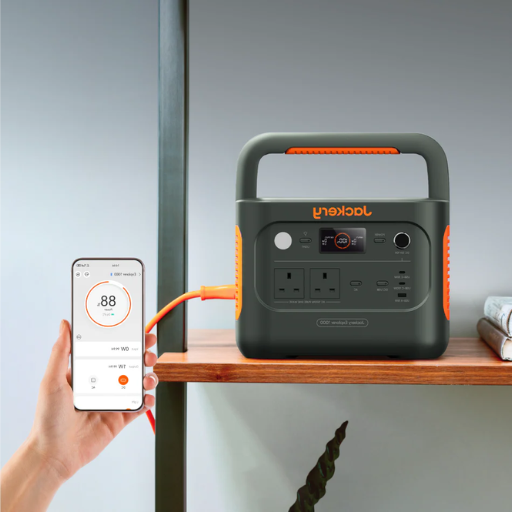
For choosing a residential generator, significant considerations should be kept in mind:
- Power Needs: Calculate wattage requirements for appliances and devices that must be operational during a power cut. It could include refrigerators, LPG lights, and heating systems.
- Size and Capacity: The generator should be appropriately sized to meet the wattage requirements at a minimum, but consideration should also be given to having excess capacity for domestic emergencies.
- Fuel Choice: Choose the fuel that will be safest and best suited to availability and storage criteria: gasoline, propane, or diesel.
- One-time Setup vs. Frequent Setup: With portable ones, there will be some money saving and mobilizing, so moving it from place to place manually with setup is required while standby generators are permanently installed and start charging on their own once an outage takes place.
- Noise Level: Get a decibel rating for the generator and ensure that it works at a noise level appropriate for your atmosphere.
- Safety: Automatic shutoff and safe overload seem to be absorbed into safety considerations.
A close study of these factors will help you effectively and reliably select a generator that suits your home’s specific needs.
Difference Between Portable and Standby Generators
|
Feature |
Portable Generator |
Standby Generator |
|---|---|---|
|
Cost |
$400-$2,000 |
$2,000-$10,000+ |
|
Power Output |
3,000-8,500 watts |
7,000-22,000+ watts |
|
Fuel Type |
Gasoline, propane |
Natural gas, propane |
|
Installation |
No installation needed |
Requires professional installation |
|
Portability |
High, movable with wheels |
Fixed, non-movable |
|
Operation |
Manual start required |
Automatic, starts when outage occurs |
|
Use Cases |
Short outages, outdoor events |
Long outages, whole-home coverage |
|
Refueling |
Needs manual refueling |
Can run on continuous fuel supply |
|
Noise Level |
Moderate (60-80 dB) |
Relatively quieter (60-70 dB) |
|
Home Value Impact |
No significant change |
May increase property value |
How to Determine the Amount of Power You Need?
How generator sizing is done depends mainly on the required power calculation. This targets the devices and appliances one wants to power during an outage. Below is the process:
- List Your Essential Appliances and Equipment
Name all the appliances and devices that one considers essential to keep going. These are generally refrigerators, freezers, lighting, fans, heating or cooling equipment, and medical and communication devices.
- Check the Wattage Requirements
All appliances have a starting wattage (surge watts) and rated wattage (running watts). For example:
- Refrigerator/Freezer: ~1,200 surge watts and ~200 running watts
- Microwave: ~1,200 watts
- LED Bulb (60W equivalent): ~10 watts
- Sump Pump (1/3 HP): ~1,300 surge watts and ~800 running watts
- A/C (10,000 BTU): ~2,200 surge watts and ~1,500 running watts
- Add Up the Wattage
Add up the wattage required by all devices to get the necessary power. For instance, if your listed appliances require 4,800 starting watts and 3,000 running watts, your generator should then be at 6,000 watts, with some margin included.
- Consider Future Power Needs
Having a larger generator to add extra equipment or meet other demands down the road is good.
- The Types of Generators for Power Levels
Portable generators range from about 2,000 to 7,000 watts, are suitable for short-duration, and have fairly medium-type power requirements.
Standby generators begin at around 8,000 watts, taking whole-home backup as their brief. Systematically transfer your power requirements. Considering contingencies, the generator you will pick will never fail you in acutely essential situations. You can use an online wattage calculator from Generac or Honda for a more accurate calculation. These calculators ease estimating total power needs while helping match your needs with the appropriate generator model.
Why Generator Power Output Matters?
The power output of a generator is imperative in ensuring an adequate energy supply during outages or a lack of grid access. Adequate power output enables any essential appliance or device to operate free from interruptions or chances of overloading the generator. The following are reasons why power output matters in any generator:
- Power for Essential Appliances
Powerful enough to keep a generator running, this ensures that essential appliances like refrigerators, freezers, and medical machines remain on. For example, a standard refrigerator may require around 600 to 800 watts, while a freezer may need about 500 to 700 watts.
- Support Heating and Cooling Systems
Space heaters or other cooling systems require a lot of power to run. A portable air conditioner might need somewhere between 1,000 and 1,500 watts, while a central air conditioning unit probably needs 2,000 or more.
- Smooth Running of Electronics
Electronics like computers, routers, and televisions need stable and sufficient power. On average, a desktop computer uses about 100 to 300 watts; however, a Wi-Fi router will probably need about 10 to 20 watts.
- Upkeep of Essential Home Lighting
Correct power output during an outage lets your home stay lit. LED bulbs usually draw anywhere from 7 to 10 watts per bulb, but the total wattages add up fast depending on how many they’re using.
- Powering Outdoor Tools and Equipment
This power tool can support drills, saws, or electric lawnmowers if one is using a generator in an outdoor or remote setting. Depending on the specific tools and equipment, they could vary between 500 and 1,500 watts.
Having the generator output picked right ensures that you can meet varying energy needs and avoid inconveniences and potential damage to appliances or the generator.
Installing a Home Standby Generator

Installation of a standby generator for the home requires several steps once safety and functionality have been assured.
- Selecting the Right Location
Position the generator installation outside the residence in an open-air environment, ensuring it remains a few feet away from windows, doors, or any vents that may allow exhaust fumes into the residence.
- Setting the Solid Base
The generator must be set on a stable and even base, such as a concrete pad, to stabilize the unit and reduce vibrations.
- Connecting the Fuel Source
A licensed professional must ensure that the generator is connected to your home’s natural gas or propane supply and that it has been done in accordance with the safety codes applicable in your area.
- Setting up the Transfer Switch
The installation shall be done by an electrician duly licensed to connect the transfer switch to the generator and your home’s electrical system, thus allowing automatic power transfer during an outage.
- Testing the System
Once you’ve powered your generator, do a test run to ensure it powers properly and transfers power seamlessly during an outage.
For best results and to abide by local codes, it is always suggested to seek the assistance of a licensed contractor or electrician during setup.
Steps to Install a Generator Safely
|
Step |
Description |
|---|---|
|
Site Selection |
Choose a level, ventilated, and safe location |
|
Check Requirements |
Obtain local permits and HOA approvals |
|
Prepare Ground |
Install a stable, fire-resistant foundation |
|
Position Generator |
Place at least 20 ft from windows/doors |
|
Fuel Connection |
Install a natural gas or propane connection |
|
Transfer Switch Setup |
Install an automatic or manual transfer switch |
|
Electrical Setup |
Connect the generator to the home’s wiring safely |
|
Inspect Installations |
Verify alignment with building inspections |
|
Test Operation |
Check fuel, connections, and power output |
|
Regular Maintenance |
Schedule ongoing inspections and servicing |
Role of an Electrician in Installation
The generation and transfer of electricity have a variety of applications, and it is the role of an electrician to determine the installation of a generator. I ensure all electrical connections are made securely and according to local codes, oversee the proper application of the transfer switch, and verify that the system functions correctly and smoothly while power is out. This can also be dangerous, including backfeeding or overloading, which I can help you avoid.
Connecting to the Home’s Electrical System
Attaching a generator to the home’s electrical system must be planned and conducted safely. The five main things to watch out for when setting up a safe and efficient connection are as follows:
- Install a Transfer Switch
A transfer switch is instrumental in safely switching the home’s power supply to the generator or the utility grid to avoid backfeeding, which may create hazards for utility workers and might also harm electrical appliances.
- Use Proper Wiring
Heavy-duty, properly rated wires should be used to connect the generator to the house. Ensure all cables are in good shape and withstand the required electrical load.
- Determine Essential Circuits
Identify critical circuits for refrigeration, heating, medical equipment, and lighting. When there is a power outage, the generator will power the most important systems.
- Ground the Generator
Proper grounding furnishes protection against electrical hazards and safeguards the home electrical system. Make sure the generator is grounded per the manufacturer’s instructions.
- Test the System Regularly
At this stage, after completing the setup, one needs to perform tests on the system to check for malfunctioning components. Such routine tests will help identify problem areas before an emergency occurs.
With these steps, connecting a home generator safely and maintaining power during an outage can be ensured.
Managing Extended Outages with a Backup Generator
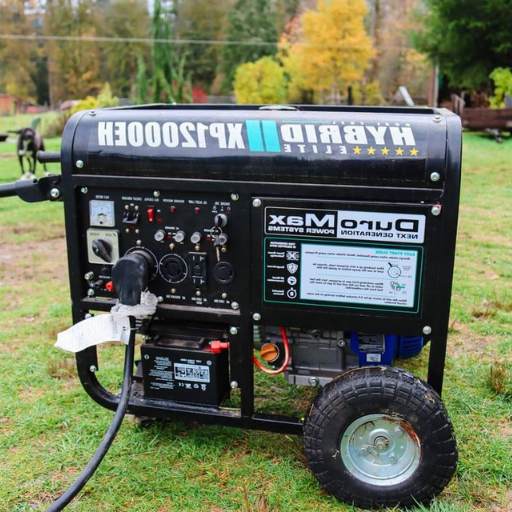
When extended outages occur, a generator is a backup that keeps everyone’s appliances and systems running. Consider these tips for long durations:
- Fuel Level Monitoring
Check that the generator has enough fuel to run. Fill it when necessary following safety standards, and keep the extra fuel in a safe container.
- Check Up and Stay Vigilant
During the outage, inspect for signs of overheating or wear and tear. Minor troubleshooting will prevent costly repairs.
- Prioritize Energy Consumption
Save fuel using only essential loads such as refrigerators, lights, and specific medical equipment.
- Follow Maintenance Instructions
While the generator is running, follow the manufacturer’s instructions to keep the generator working efficiently.
One-way ensures that a homeowner will not compromise the safety or further the backup generator’s functionality while supporting it for many hours.
How Long Can You Run a Generator?
How long a generator will operate depends on its type, size, fuel source, and model. Portable generators usually work 8 to 12 hours on one gas tank, whereas standby generators hooked up to a big fuel supply can run much longer.
Portable Generation:
Most portable generators are intended for immediate, short-term use and are gasoline-fueled, thus limiting their running time. A 5,000-watt generator might consume some 0.75 gallons of gasoline per hour running at 50 percent load, which means that with its standard 5-gallon tank, it will last for roughly 7-10 hours before refilling. Continuous use of portable generators requires constant refueling, which might not always be feasible during prolonged outages.
Standby Generation:
Being permanently installed and connected to a home’s fuel supply, standby generators can achieve far longer operation times. Powered by propane or natural gas, the standby generator could, in theory, operate for its full operational term in days or even weeks, if an uninterrupted supply of fuel is maintained :
- A standby generator, rated at 20 kW and powered by propane and working on a 500-gallon propane tank, can provide power for up to 5 to 7 days, depending on the load.
- Generators connected to natural gas lines can keep going if the supply is uninterrupted.
However, manufacturers want any standby generator to be down every 24 to 72 hours for safety and refueling (if from a can) and to prevent failure due to overheating, wear, and tear. Proper ventilation, oil change, and a cool level check must be given equal priority to such safety requirements during prolonged use.
The manual of the given generator should always refer to specific runtime limitations and maintenance intervals, and they must never be neglected, for overuse is one of the main causes of premature wear or equipment failure.
What to Do When Utility Power Fails?
Utility power is gone, and the first thing I do is keep my composure. I try to find out whether it is a local or statewide outage by talking to the utility provider or checking online. If I have a generator, I ensure it is set for use and follow all startup procedures, including checking fuel levels and connections. While the outage persists, I conserve energy and employ only the necessary appliances to ensure they do not pressure backup power systems. Also, I make sure that flashlights, batteries, and emergency supplies are within quick reach.
Strategies for Generator Use During a Power Outage
| Strategy | Details |
|---|---|
|
Safety Precautions |
Install CO alarms near bedrooms |
|
Correct Placement |
Place the generator 20 feet from doors/windows |
|
Ventilation |
Ensure an open, well-ventilated outdoor area |
|
Avoid Backfeeding |
Never connect a generator to a wall outlet |
|
Fuel Management |
Store fuel in approved, ventilated containers |
|
Refueling Safety |
Turn off the generator before adding fuel |
|
Use Proper Cords |
Use heavy-duty, outdoor-rated cords only |
|
Weather Protection |
Shield generator with canopy during rain |
|
Stagger Appliance Use |
Avoid overloading by alternating equipment |
|
Routine Maintenance |
Check for damages, leaks, and fuel regularly |
References
-
Utah State University Extension – Alternatives During a Power Outage: This source provides insights into the safe use of portable generators during power outages.
-
Washington State Department of Health – Generator Use During a Power Outage: This page offers detailed safety guidelines for operating generators during power outages.
-
Town of Burlington, CT – Generator Safety Tips: This resource highlights the primary hazards and safety measures associated with generator use.
Frequently Asked Questions (FAQ)
Q: What is the first step when using a generator during a power outage?
A: The first step is to ensure safety by keeping the portable generator at least 20 feet away from your house to prevent carbon monoxide poisoning. Ensure the generator is on a dry, flat surface and shielded from rain to keep it dry.
Q: How can I connect a generator to power my home during an outage?
A: To safely connect a generator to power your home, use an automatic or manual power transfer switch. This disconnects the house from the power grid and allows you to run the generator without risking back-feeding into power lines.
Q: Can a portable generator power my entire house?
A: A portable generator typically cannot power your entire house. To prevent overloading, it is important to prioritize essential appliances and ensure the generator’s power output matches your needs.
Q: What appliances can I run with a 30-amp generator during a power outage?
A: A 30-amp generator can power essential appliances such as refrigerators, lights, and other small devices. Always check the generator’s power output and the appliances’ requirements to ensure enough power is available.
Q: Why should I install a power transfer switch for my generator?
A: Installing a power transfer switch is crucial for safely connecting a generator to your home’s electrical system. It helps protect the generator and the power grid by preventing back-feeding and allows for efficient switching between utility and generator power.
Q: What should I do if my generator cannot handle all the appliances I want to power?
A: If your generator cannot handle all the appliances you want to power, prioritize critical appliances and turn the generator on and off to manage the load without overloading the system.
Q: Is it safe to use a generator during long-term power outages?
A: Yes, but you must ensure proper safety measures such as keeping the generator well-maintained, using it in a well-ventilated area at least 20 feet away from the house, and managing fuel supplies appropriately for long-term use.
Q: How do I protect the generator during adverse weather conditions?
A: Protect the generator by using a canopy or cover designed for generators. This will shield it from rain and snow, ensuring it stays dry and operational during use.
Q: What fuel options are available for generators, and which is preferable during a power outage?
A: Generators can run on gasoline, diesel, or natural gas. Natural gas is often preferable during a power outage because it is more readily available and does not require storage like gasoline or diesel.
Q: What safety precautions should I take when running a generator during a power outage?
A: Always run the generator outdoors in a well-ventilated area at least 20 feet away from the house to prevent carbon monoxide buildup. Regularly check the generator’s power output and ensure it is not overloaded. Disconnect the home from the power grid using a transfer switch to avoid back-feeding.



